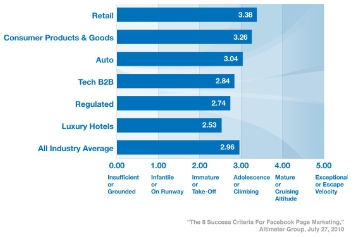Brand language by accident
779 words | ~4 min
When the BBC News website links to a story titled the lexicography of Starbucks, how can I say no? Even better is that it's actually pretty good, asking some of the right people the right questions about the ways brands try to insert their own language into the world. (BBC News, by the way, has some of the best popular coverage of language and lexicography topics. Thanks to Jesse Sheidlower for pointing me to this piece on the inclusion of vuvuzela in the Oxford Dictionary of English.)
The core of the story - about an English professor and a coffee-shop worker who basically started fighting in a Starbucks over the former's refusal to say something unimportant about wanting no butter on a bagel - is, as the Beeb says, 'bafflingly trivial'. But the quotes from the experts genuinely have the rare ring of thoughtfulness about them, especially this one from Susie Dent:
It is every company's dream to get their language out there and being used - it's linguistic product placement
And this from Jonathan Gabay (which itself borrows beautifully from Little Britain, of course):
The problem is when it's too heavy-handed and and the staff are effectively saying, 'Computer says no.' Marketing is ultimately about communication and some of these companies need to put down the guide books and remember that.
So why am I writing about this, except just because? Because I disagree a bit with the final thought of the piece, from Tony Thorne:
"Some of this stuff is ludicrous in its complexity," he says. "They're not trying to turn us into food snobs - it's simply about imposing their brand values. "It's intended to bamboozle and intimidate. I see it as a form of corporate bullying."
There's a slight confusion here between what brand lexicons intend to do and what they end up doing. Given my background I'm probably hypersensitive to this sort of distinction, but still. Popular thought about PR has been bound up for a long time with popular thought about language use. The classic caricature of the PR industry (never better portrayed than in Absolute Power) is of the slick operators of language, compelling people to use new, euphemistic words in place of old, damaging ones. This is all based on the popular version of George Lakoff's theory of conceptual metaphor: the idea that if you change the words people speak, you change the thoughts they think. If you want to see why its application to political and public communications is flawed, read Stephen Pinker's devastating knock-down of Lakoff's book Whose Freedom.
The point is that brands themselves are not the smooth arch-operators of language. They're often at the mercy of their own words and phrases. When you work every day inside any organisational environment, it gets hard to remember that the people you're marketing to don't see the world like you see it. They may not share your unbridled enthusiasm for your new bottle-tops, your catalytic converter technology or your fifteen different types of cappuccino. The public lexicography of brands is often an overspill of that internal enthusiasm, based on the belief that your customers not only want to talk to you, they want to talk like you.
The language isn't 'intended to bamboozle and humiliate', or even to impose 'brand values'. Most of the time it's just trying to communicate those values, which often come down to little more than the enthusiasm of people who spend all day thinking about coffee (or whatever). Sometimes it's more deliberate, an attempt to convey something of the spirit of the brand that, to the people inside, seems to justify that enthusiasm. ('Hey, we don't feel like menial workers, we feel like baristas!') The problem is not arch-cunning, but forgetfulness. The users of these lexicons forget what it's like to be a normal person, with only a brief and fleeting connection to a brand; to have no desire to speak its language at all. It's a kind of accident, like when you show your friends too many of your holiday photos.
Far better are those brands who don't need a complicated lexicon to talk to people, because they remember how ordinary people actually talk, and find their way of fitting quite naturally into those conversations.
# Alex Steer (20/08/2010)


